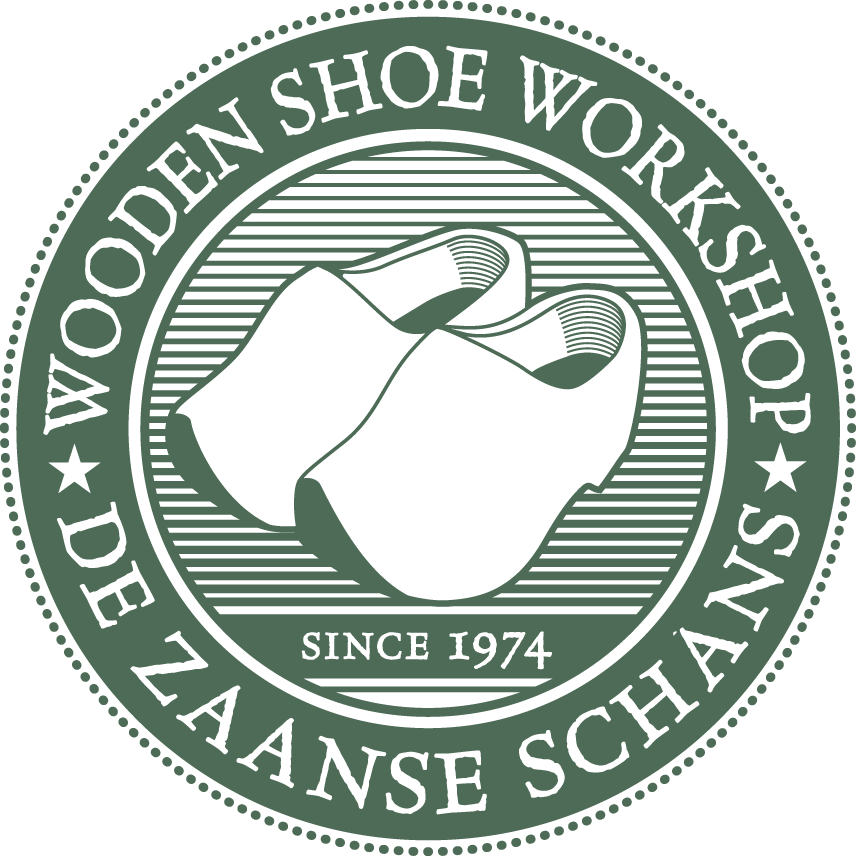Historic postcard
of wooden shoes being
made by hand.
Unfortunately, almost all wooden shoes ended up as firewood once they were worn out, meaning historic wooden shoes are rare. You can see one of the Netherlands’ biggest and widest wooden shoe collection at our wooden shoe museum at De Zaanse Schans. Our collection is constantly updated and new pieces are added yearly.
If you have or know anyone who has special wooden shoes in their possession and would like to part with them, please send us an email or give us a call. We are very honored to preserve your museum piece for generations to come.
One the the Netherlands’s
biggest and widest
wooden shoe collections
Although wooden shoes were also worn in other countries, the full wooden shoe with a wooden cap is typically Dutch. Each Dutch region used to have its own wooden shoe makers with their own recognizable shape of wooden shoes. One look at someone’s feet and you would know where they came from.
The wooden shoe is an outdoor shoe. It protects the feet and keeps them warm, dry and safe. Wooden shoes were taken off at the front door and put on a so-called ‘wooden shoe rack’. Decorations on the shoes were often used to distinguish ownership. They were also often specifically adapted for work situations. Wooden shoes have been awarded with a CE safety certification since the early 2000’s. They are often used as a comfortable alternative to steel-nosed shoes.
“Each Dutch region or village used to have its own wooden shoe makers with their own recognizable shape of wooden shoes”
From 1550 AD, dried peat became the main source of fuel alongside wood. In the rural peat districts in the north-eastern part of the Netherlands where peat was collected for fuel, special peat wooden shoes were worn which were adapted to the boggy ground. These wooden shoes had a flat and extra broad sole to avoid sinking into the soft terrain. Our museum collection even contains a pair of real ‘horse clogs’, which the horses wore so that they could make their way across the boggy land.
Wooden shoes provided grip for both man and animal. The ‘horse clog’ and the ‘ice wooden shoe’ are examples of this
Extra robust wooden shoes were made for stoneworkers and dyke workers who were using blocks of basalt to strengthen dykes or build them, like the ‘Afsluitdijk’. In the severe winters, the soles of the wooden shoes were fitted with iron studs to give them more grip on the slippery ice.
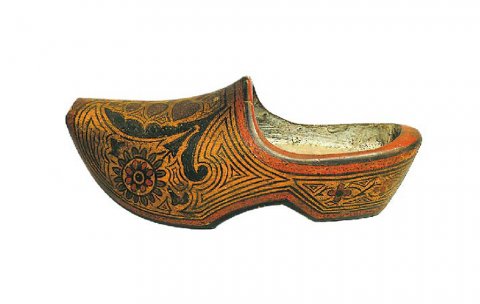
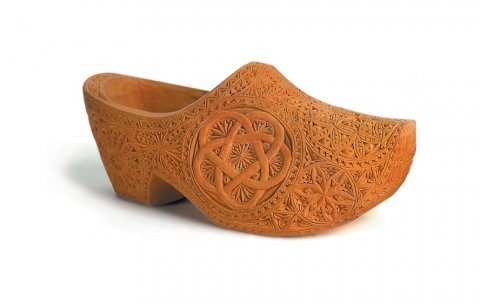
Wooden shoes are often decorated with paintings or carvings
There were also special wooden shoes to wear to church on Sundays. Bridegrooms would get a splendid pair of bridal wooden shoes made for their wedding day, often decorated with patterns symbolizing trust, hope, love and fertility. After the wedding, these wooden shoes were often displayed in the best room of the house as they were too beautiful to wear more than once.
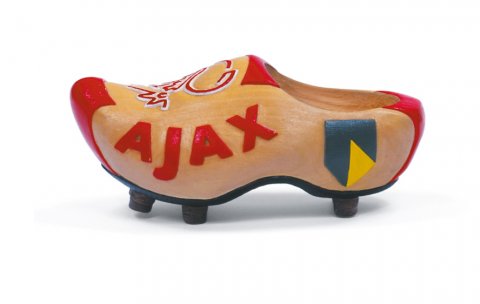
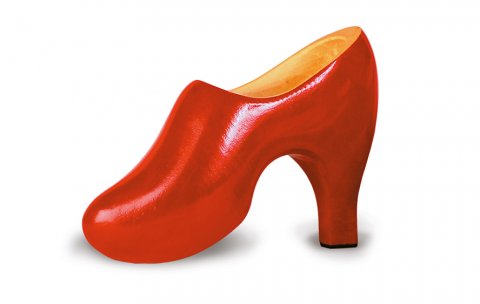
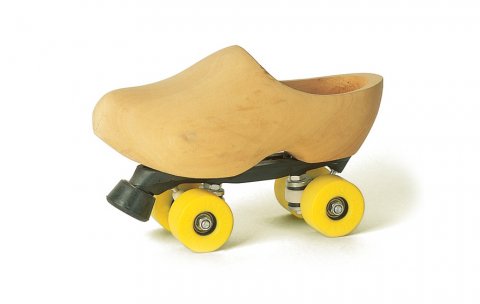
As well as the collection of bridal clogs, we have a separate display of wooden shoes from around the whole world, from the Pyrenees to Japan. Our museum is also home to a collection of special clogs. What do you think about the high-heeled clogs? Or how about the roller skate clogs or Ajax clogs?
The wooden shoe also inspires artists
Dutch artist Bas van Buuren has been working on his wooden shoe projects for decades. Some of his unusual creations are on permanent display in our museum.
The diamond clog is a unique acquisition and addition to our museum. The famous Amsterdam artist and worker in precious metals Jan Roedema came up with the design which was inspired by Damien Hirst and the organic shape of the clog. ‘The Diamond Clog’ is on permanent display in our museum.

